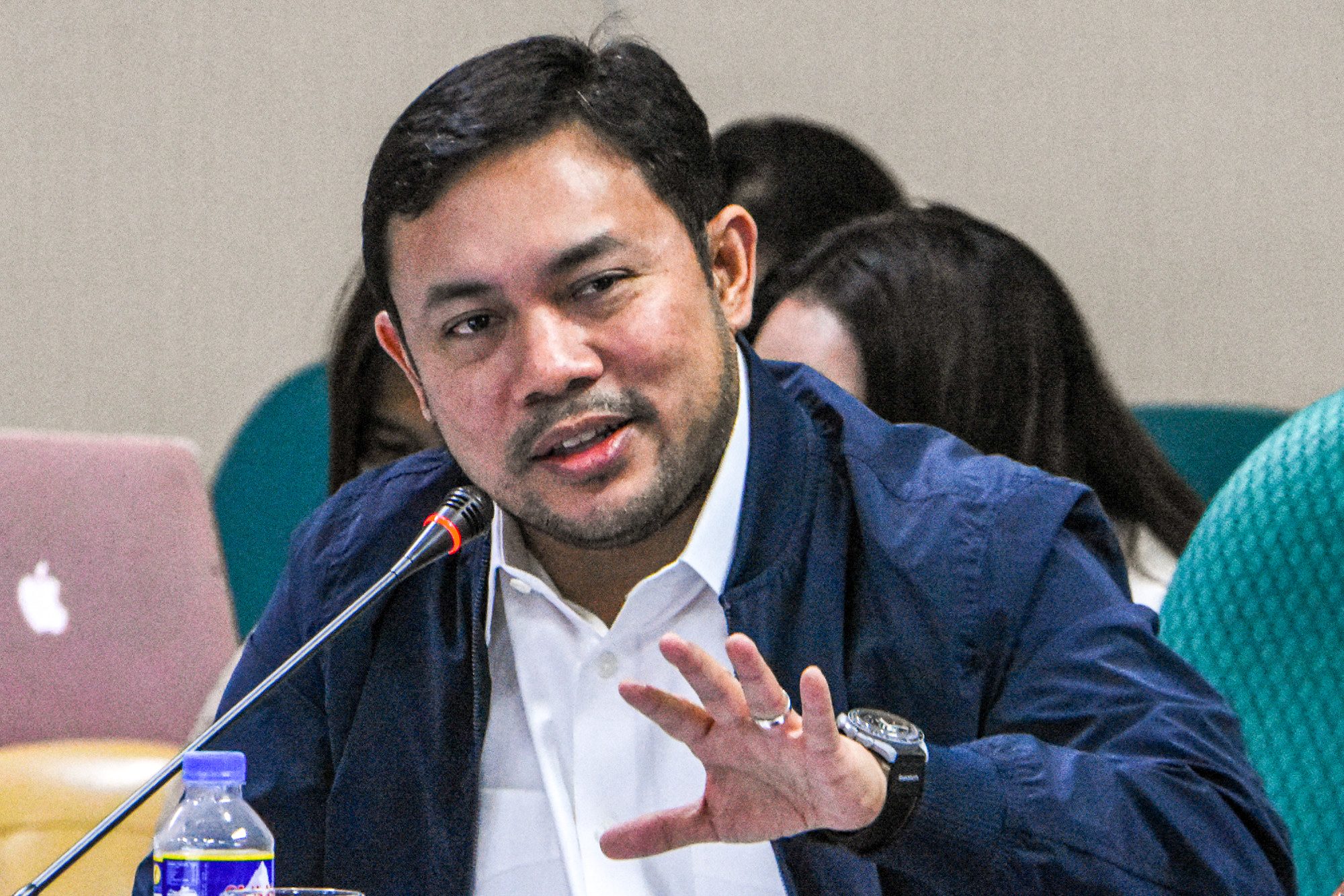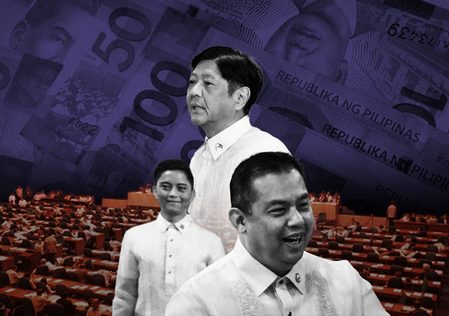SUMMARY
This is AI generated summarization, which may have errors. For context, always refer to the full article.

MANILA, Philippines – The controversial Maharlika fund bill is now up for debate on the Senate floor.
Senator Mark Villar, chairperson of the Senate Banks Committee, sponsored the bill on Monday, March 20 – three weeks after committee hearings on the proposal ended. In his sponsorship speech, Villar said that establishing the Maharlika Investment Fund “has the potential to bring back the Philippines to its high growth trajectory through investments in the country’s developmental projects.”
But during the committee hearings, senators, and resource persons alike questioned the financial viability of the sovereign wealth fund. One concern was that drawing funds from the Bangko Sentral ng Pilipinas (BSP), Land Bank of the Philippines (Landbank), and Development Bank of the Philippines (DBP) could increase a systemic risk to the Philippine banking system.
Concerned groups also previously raised lingering concerns about the Maharlika fund’s insufficient safeguards and risky sovereign guarantees.
When the bill was first elevated from the lower to upper house, Senate President Juan Miguel “Migz” Zubiri vowed that he would “not rush this measure and will make sure that all points are covered to make sure we don’t make mistakes.” So now that about seven weeks have passed since it first reached the Senate, how has the bill changed?
Funding sources
Under Senate Bill 2020, the Maharlika Investment Corporation (MIC) will have an authorized capital stock of P500,000,000,000, to be divided into 5,000,000,000 shares at a par value of P100 each. This means that the MIC can raise up to P500,000,000,000 in capital – unless the Board of Directors decides to increase this limit.
Of these shares, 3,750,000,000 will be common shares, which will be worth P375,000,000,000. The national government, its agencies, government owned and controlled corporations (GOCCs), or government financial institutions (GFIs) will subscribe – or promise to purchase – to these common shares.
The rest of the 1,250,000,000 shares – worth P125,000,000,000 – will be preferred shares to be subscribed by the national government and “reputable private financial institutions and corporations.” However, no single private sector shareholder will be allowed to own more than 5% of the authorized capital stock.
What’s the difference between common and preferred shares? Holders of common shares receive voting rights proportional to the amount of shares that they have, but are the last priority to receive anything if a company goes bankrupt and liquidates. Meanwhile, holders of preferred shares typically don’t receive voting rights, but often receive regular dividends and have higher priority to be paid in the event of liquidation.

So where will initial funding come from? Upon the creation of the MIC, P125,000,000,000 worth of common shares will be subscribed by the following:
- LBP – P50,000,000,000
- DBP – P25,000,000,000
- National government – P50,000,000,000
Of the P125,000,000,000 common shares to be subscribed, the LBP and DBP are required to fully pay their P75,000,000,000 contribution upon the MIC’s establishment.
Villar said that the involvement of GFIs as contributors to the initial capital is “reasonable and will not crowd out other lending obligations,” adding that the expected return of the MIF would be at 8.6% – supposedly much higher than the cost of capital and return on their current investments.
National government’s contribution
Meanwhile, the national government will be raising its contribution from BSP dividends, its remittances from Philippine Gaming Corporation (PAGCOR), operations from the Department of Finance – Privatization and Management Office (DOF-PMO), and other sources.

The BSP will be required to contribute 100% of its total declared dividends in the first two years following the MIC’s establishment. After that, the BSP will contribute 50% of its dividends while the central bank continues building up its capital requirement. Once it completes its P250 billion capital requirement, the BSP will continue remitting 100% of its total declared dividends to the MIC until the national government’s P50,000,000,000 contribution to the fund is fully paid. The BSP’s Monetary Board may also request to modify dividend contributions given economic circumstances.
The national government will also set aside 10% of its share from the income of PAGCOR, except for the portion already earmarked for the Universal Health Care Act. Other government owned gaming operators and regulators will also contribute 10% of their gaming operations revenues to the fund.
Through the DOF-PMO, the government may also sell its properties to the MIC at fair market value. Proceeds from the privatization of other government assets can also be used for the MIC.
Previously, the bill also mandated the Government Service Insurance System (GSIS), Social Security System (SSS), and the annual budget to contribute to the MIC. Following widespread criticism, lawmakers removed the mandatory contributions of all three. The final bill now included a provision that permanently barred government pension funds from contributing to the Maharlika Investment Fund.
Issuance of bonds
The MIC now also has the ability to issue bonds within and outside the Philippines. The bonds may be long-term, medium-term, or short-term, with fixed or floating interest rates.
“The MIC shall provide for appropriate reserves for the redemption or retirement of the bonds. These bonds and other obligations shall be redeemable at the option of the MIC at or before maturity and in such manner as may be stipulated therein and shall bear such rate of interest as may be fixed by the MIC,” the Senate bill’s section on bond issuance read.
Governance and accountability
The MIC will now have nine board members instead of the 15-person board originally proposed. The board of directors will be composed as follows:
- finance secretary (chairperson)
- chief executive officer of the MIC (vice-chairperson)
- president of Land Bank
- president of DBP
- 2 regular directors
- 3 independent directors from the private sector
The CEO will be appointed by the President of the Philippines upon recommendation of the Advisory Body for a three-year term.
The regular directors will be appointed by the President of the Philippines upon recommendation of the Advisory Body for a three-year term. They must be Filipino citizens with experience in either corporate governance and administration, investment in financial assets, or management of investments in the global and local markets. Regular directors also cannot hold public office or possess any private financial or business interest during their tenure.
The independent directors will also be appointed by the President of the Philippines for upon recommendation of the Advisory Body for a one-year term, which may be extended up to a maximum of 9 years. They must also not hold any business or financial interests that could result in a conflict of interest with the fund’s management.
The Advisory Body, which has the power to recommend the CEO and directors of the MIC, will be composed of the budget secretary, the National Economic and Development Authority secretary, and the treasurer of the Philippines.
According to Villar, the bill also has several layers of oversight “to ensure accountability and proper governance of the fund,” namely:
- an internal auditor independent from the MIC management
- an internationally recognized audit firm serving as an external auditor
- an examination of the books and accounts of the fund by the Commission on Audit
- a Joint Congressional Oversight Committee composed of five members each from the Senate and House
- a policy of transparency for all documents of the fund and MIC, which will be open to the public
– Rappler.com
Add a comment
How does this make you feel?






![[WATCH] Bamban POGO scandal: There’s a bigger fish than Alice Guo](https://www.rappler.com/tachyon/2024/07/inside-track-tcard-bamban-pogo.jpg?resize=257%2C257&crop=435px%2C0px%2C1080px%2C1080px)
There are no comments yet. Add your comment to start the conversation.